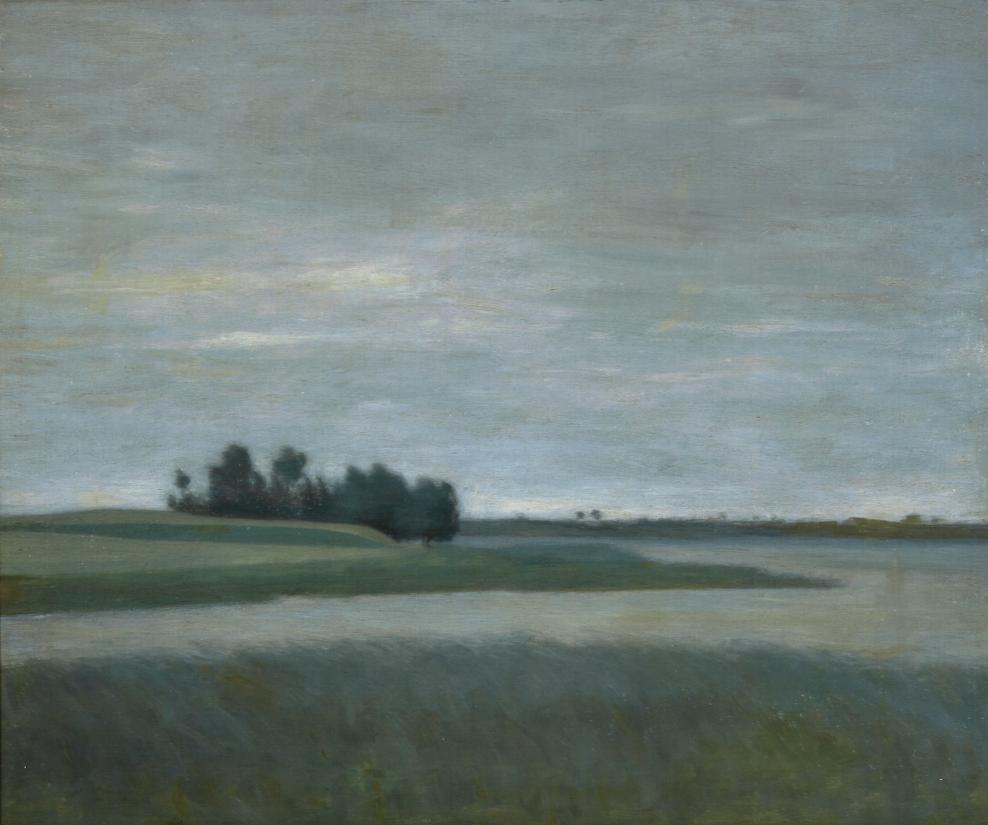Today Hammershøi is known mainly as an interior painter. However, he also painted a string of groundbreaking landscapes. Landskab (Falster) thus adds to Fuglsang Kunstmuseum’s years-long focus on Danish landscape art. The purchase was made possible by support from Fuglsang Kunstmuseums Venner (Friends of Fuglsang Art Museum), the Augustinus Foundation and the New Carlsberg Foundation.
Sensuous landscape
Initially, Vilhelm Hammershøi came to Falster because he had fallen in love with Ida, a grocer’s daughter from the town of Stubbekøbing on the island. However, the local landscape also caught the young painter’s attention. The characteristic flat landscape stretches out in the background, while the water pulls in from the right, along with the wind. On a narrow strip of land in the middle ground, a small copse of trees is swaying in the wind. A sensuous sky in shades of grey and pale blue, with a few bright patches, covers a large portion of the canvas. We recognize Hammershøi’s characteristic muted colour palette, which he uses to evoke an almost vibrant intensity with a limited range of colours.
A site-less feel
Nothing interferes with the landscape in Hammershøi’s painting. It has an almost site-less feel. Apart from the flat landscape, there is nothing specific to identify the location. In that regard, Hammershøi’s landscapes differs from Golden Age landscapes, whose depiction of human activity, monuments, path systems or other features draws the viewer in and marks the site-specific identity. Instead, Hammershøi creates parallel planes in the composition, with sky and water as each other’s counterparts. However, the painting also tells a local story for the Fuglsang museum about his wife, Ida’s, native place.



